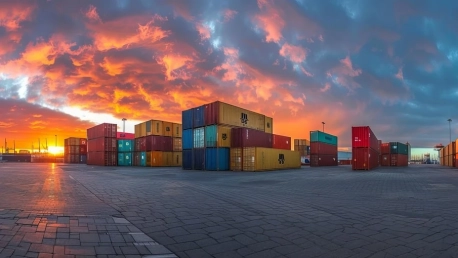The logistics insurance sector is crucial for global trade and supply chains, poised to evolve significantly by 2032 due to technological advancements and international commerce growth. The sector’s trajectory is shaped by the competitive landscape and recent global disruptions—from geopolitical tensions to pandemics. This analysis provides insights into the trends and developments expected to influence logistics insurance in the next decade, laying out key considerations for industry participants. As we peer into the future, logistics stakeholders can use this information to strategically plan and adapt in a rapidly changing global market. Understanding these elements is vital for companies looking to mitigate risks and capitalize on emerging opportunities in the logistics insurance arena.
Market Overview and Growth Projections
Logistics insurance is the unsung hero of the commerce world, safeguarding the transit and storage of goods from a web of risks. The industry has witnessed sound growth, which is set to continue. Over the forecast period between 2024-2032, a steady rise is anticipated, clocking in a CAGR of 3.3%—a signifier of robust health and the market’s expected upward trajectory.The upcoming years promise to unravel trends that will redefine the market’s contours. With increasing global exchanges, the logistics insurance sector is gearing up for an era of expansion, adapting to the changing demands of worldwide trade and the array of goods whisking across the globe.
Driving Forces Behind Market Expansion
The booming international demand for goods and an expanding customer base fuel the surging logistics insurance market. As commerce crosses borders with increasing frequency, insurance becomes more pivotal, climbing to new heights. Concurrently, the sector’s swift integration of advanced technologies boosts its efficiency and scope, positioning it as an engine for growth.As the logistical landscape evolves with the infusion of digital solutions and ‘big data’, it’s primed for a major shift. These tech advancements not only enhance the logistical processes but also lead to customized insurance offerings. This cements the market’s crucial place within the supply chain. Today’s logistics insurance is becoming more relevant and sophisticated, reflecting the complex needs of modern trade and transport.
Dissecting the Competitive Landscape
Key players in the logistics insurance market have been at the helm, dictating the rhythm of progress and competition. Giants like American International and Allianz hold sway, their presence reverberating through the industry. These companies aren’t just market participants; they are influencers, shaping the industry through strategic maneuvers and diverse service offerings.Their strategies, ranging from mergers and acquisitions to innovative product launches, serve as testaments to the market’s dynamic nature. This competitive chess game underlines the importance of strategic agility and the need for constant innovation to stay ahead.
Market Segmentation Insights
Delving into market segmentation, we uncover the diverse landscape of logistics insurance, which branches into specialized areas such as transportation, marine, and aviation. These sectors cater to unique facets of commerce, from active production lines to aircraft soaring in the sky. Such variety underscores a marketplace that’s intricate and multifaceted.Recognizing these distinct segments is crucial for creating targeted market strategies and bolstering customer relations. Segment analysis enables a more focused approach, identifying specific niches and unlocking potential for expansion in this complex industry. By examining these categories, businesses can tailor their services more finely, ensuring they meet the nuanced needs of each segment, and carving out a competitive edge in the field of logistics insurance. This strategic segmentation leads to a robust, dynamic market environment.
Research Methodology and Data Analysis
The foundation of this market analysis rests on a robust methodology which merges primary research with a complex array of secondary data sources. Exemplifying this is the application of SWOT analysis and Porter’s Five Forces, tools that dissect market conditions with surgical precision.Coupled with qualitative insights from industry experts through primary research, secondary data fills the gaps, ensuring that every angle is considered. This amalgamation of diverse data streams results in a richly-woven narrative of the logistics insurance market’s current state and promising future.
The Impact of Global Disruptions on the Market
The COVID-19 pandemic has significantly disrupted logistics and consequently the insurance industry. As companies and consumers alike adapt to new norms, the industry sees a pivot toward digital solutions and resilience-focused strategies. This shift reflects the urgent need for operations that can withstand sudden global changes.Logistics and insurance markets, now on a trajectory of profound change, grapple with these pandemic-induced challenges. Strengthened digitization efforts are evident as companies seek efficient, contactless solutions in response to altered consumer behaviors and expectations.While the pandemic’s immediate impact has somewhat diminished, its long-term effects on market operations and strategies are still emerging. It’s apparent that the sector must embrace a more agile and robust approach to manage future uncertainties. The emphasis on resilience and digital integration is not just a temporary response but a forward-looking transformation shaping the future of logistics and insurance.
Geographic Market Reach and Regional Analysis
The global logistics insurance market is diverse, with each region exhibiting distinct growth rates and challenges. In the Asia-Pacific, rapid commercial expansion drives strong progress, positioning this area at the forefront of the market. Meanwhile, established economies of Europe and North America maintain significant contributions through their consistent demand and sales.Exploring these different growth dynamics sheds light on the varied logistical landscapes across the globe, informing strategic approaches tailored to each region’s unique market conditions. This geographical analysis is crucial for understanding the international logistics insurance sector’s development, mapping out the routes for industry success. Within this context, the market’s worldwide evolution becomes a strategic game of identifying and leveraging regional strengths and opportunities.









